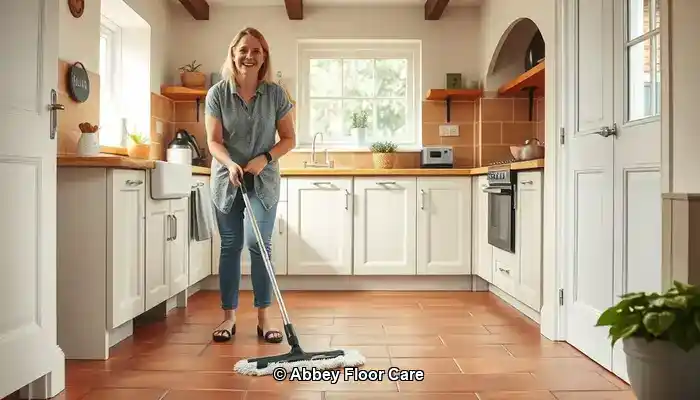
Last Updated on September 29, 2025 by David
Essential Strategies for Effective Terracotta Floor Care and Maintenance
-
- Comprehending Terracotta's Unique Porous Nature is crucial as it highlights its susceptibility to rapid dirt absorption, particularly in humid climates like Surrey.
- <b>Significance of Appropriate Sealing</b> is vital in stopping moisture and dirt from penetrating the tile surface.
- <b>Regular Maintenance Routines</b> are imperative—daily sweeping and weekly mopping with pH-neutral cleaners play a significant role in preserving the appearance of your tiles.
- Refrain from Using Harsh Chemicals, including steam mops, which can compromise the sealant and etch the tile surface.
- Choose Eco-Friendly Cleaning Solutions, especially in homes with children or pets for added safety.
- <b>Consider Professional Restoration Services</b> for thorough cleaning and resealing, ensuring enduring protection for your tiles.
- Utilise Rugs and Mats in high-traffic areas to significantly minimise dirt transfer.
- Efficient Moisture Management—ensure adequate ventilation and promptly address spills to avert stains and mould growth.
Understanding the Factors Behind Rapid Dirt Accumulation on Terracotta
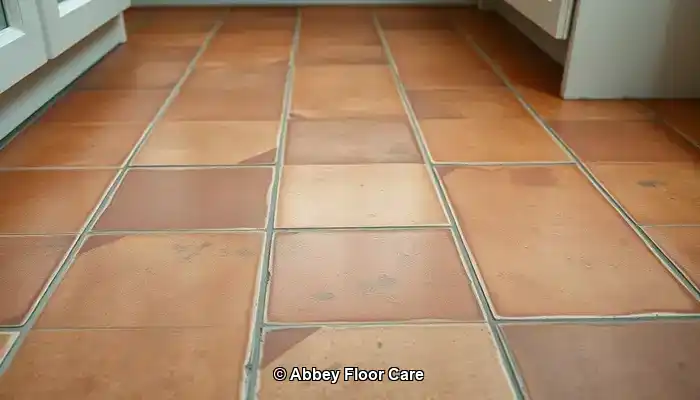
Terracotta tiles offer an aesthetically pleasing flooring option, particularly well-suited for traditional or rustic-style homes in Surrey. Their warm hues and natural textures lend a distinctive charm to any interior space. However, these appealing characteristics come with a caveat; terracotta is infamous for its propensity to become dirty in a very short time. By comprehending the underlying causes of this rapid dirt accumulation, homeowners can take proactive measures to uphold the cleanliness and attractiveness of their floors.
Expert Advice: Recommended Products for Daily Terracotta Floor Maintenance
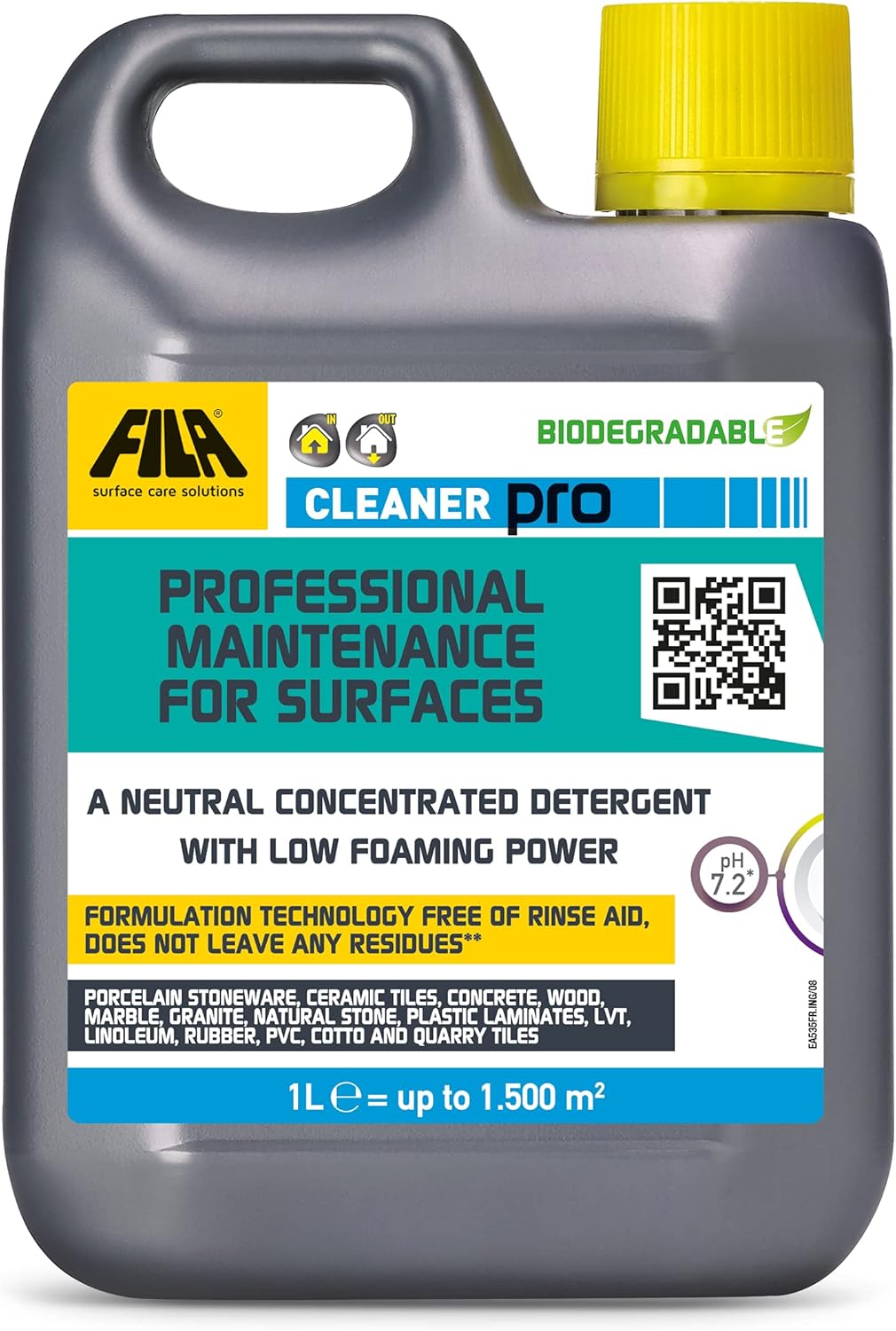
Fila Pro Floor Cleaner
|
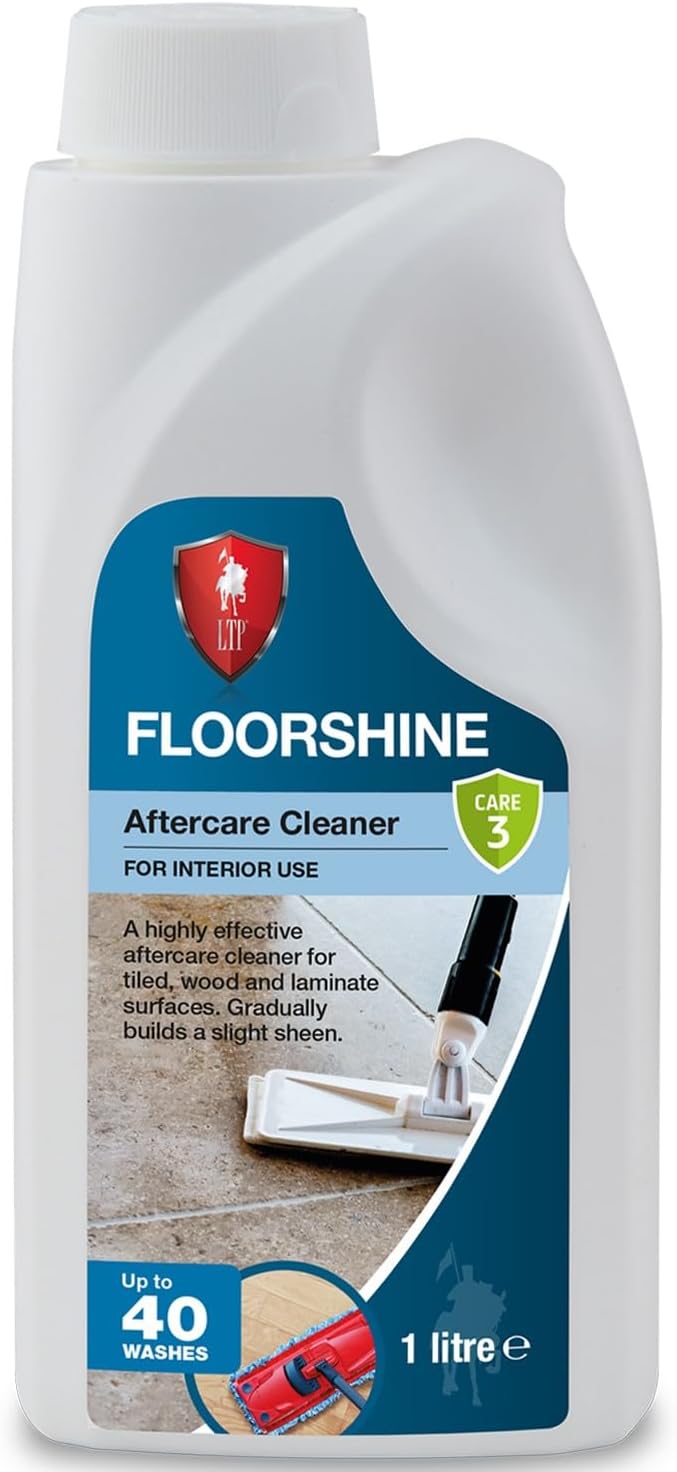
LTP Floorshine
|
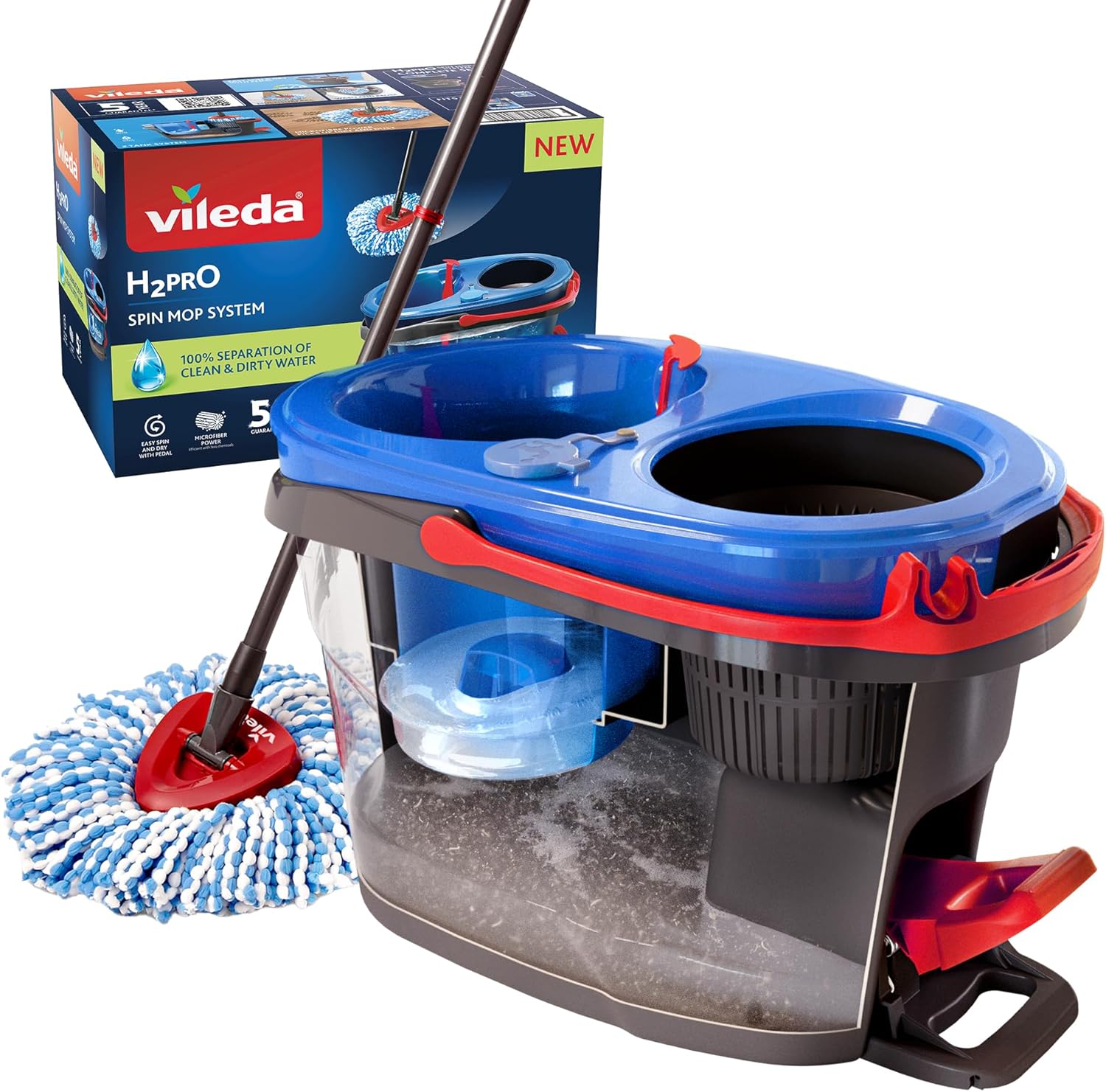
Vileda H2PrO Spin Mop System
|
Delving into Porosity: The Primary Cause of Dirt Accumulation
The composition of terracotta tiles, made from natural clay and subjected to lower firing temperatures than many other types of flooring, results in a highly porous surface. This inherent porosity allows the tiles to absorb moisture, oils, and dirt with ease, functioning similarly to a sponge. In typical daily scenarios, this characteristic enables grime to penetrate deeply into the tile, making it increasingly challenging to remove with standard cleaning techniques.
When left unsealed, terracotta tiles face an elevated risk of dirt and stains. Without a protective layer, even minor spills or muddy footprints can leave lasting impressions. Over time, these elements contribute to a dull and stained appearance, often necessitating professional cleaning intervention for restoration.
How Surrey's Climate Affects the Cleanliness of Terracotta Floors
The climatic conditions in Surrey have a significant influence on the speed at which terracotta floors accumulate dirt. This region is notorious for its consistent rainfall and damp environments, resulting in increased moisture being tracked indoors, particularly in areas like entryways and conservatories.
Homes situated near wooded areas or gardens are even more susceptible. Soil, pollen, and organic materials can easily transfer onto terracotta surfaces, especially when shoes are not removed upon entering the property.
Daily Routines That Contribute to Increased Dirt Accumulation
Aside from environmental factors, everyday habits can exacerbate the situation. Utilising inappropriate cleaning products—such as acidic solutions or bleach—can strip protective coatings and damage the tile surface. While steam mops are commonly used, they can inadvertently push moisture deeper into the tile, worsening the issue.
High-traffic areas, such as kitchens and hallways, are naturally more susceptible to deterioration. If regular sweeping and mopping are neglected, dirt can quickly accumulate and become embedded in the texture of the tile, leading to unsightly marks and potential damage.
Proven Techniques for Maintaining Spotless Terracotta Floors
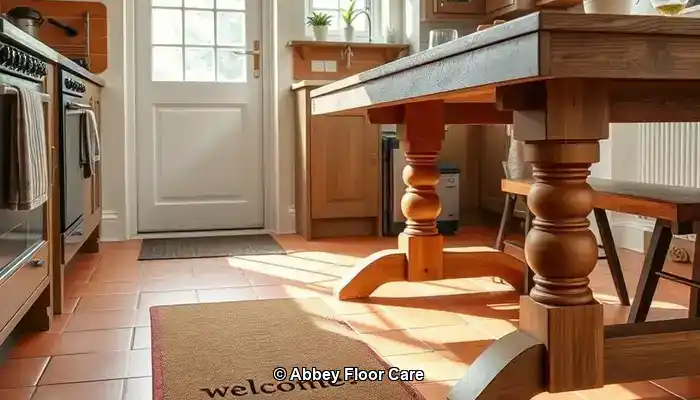
To ensure terracotta floors remain clean and inviting, a proactive approach is essential—focusing on preventing dirt accumulation right from the start. In homes throughout Surrey, where damp weather and garden traffic are commonplace, implementing preventative measures is crucial to preserving the natural allure of terracotta tiles.
The Importance of Sealing: Your First Line of Defence Against Dirt
One of the most effective methods to prevent terracotta from becoming dirty is to ensure it is properly sealed. A high-quality, breathable sealant creates a protective barrier that repels moisture, oils, and dirt. In Surrey, where humidity levels can fluctuate significantly, sealing is essential to prevent water absorption that could cause staining and mould growth.
Experts suggest resealing terracotta every 12 to 18 months, depending on foot traffic and exposure. In areas with heavy usage, such as kitchens, hallways, and conservatories, more frequent sealing may be required. Always opt for a sealant specifically designed for porous stone and avoid glossy finishes that could trap dirt.
Strategic Placement of Rugs and Mats to Combat Dirt
Placing rugs and mats strategically can greatly diminish the amount of dirt that reaches your terracotta floors. Employ durable doormats at entrances to capture mud and moisture before they spread throughout your home. In high-traffic zones like hallways or beneath dining tables, area rugs can serve as protective barriers against wear and tear.
For spaces that lead outdoors, consider washable runners that can be easily cleaned. These not only safeguard the tile but also enhance the warmth and aesthetic appeal of your living area.
Effectively Managing Moisture in Homes Across Surrey
Given Surrey's reputation for frequent rainfall and damp conditions, effective moisture management is vital in preventing dirt build-up on terracotta. Employing dehumidifiers in enclosed areas and ensuring proper ventilation throughout your home can significantly improve the situation. Promptly wiping up spills and avoiding leaving wet items—such as shoes or towels—on the floor is essential.
If your terracotta tiles are situated in a conservatory or garden room, consider adding blinds or UV filters to reduce condensation and prevent sun damage. These minor adjustments can greatly enhance both the longevity and appearance of your tiles.
By implementing proper sealing, thoughtful design choices, and moisture control, homeowners in Surrey can markedly slow down the rate at which their terracotta floors accumulate dirt. In the following section, we will explore the best cleaning practices to maintain that fresh, natural appearance day after day.
Optimal Techniques for Effectively Cleaning Terracotta Tiles
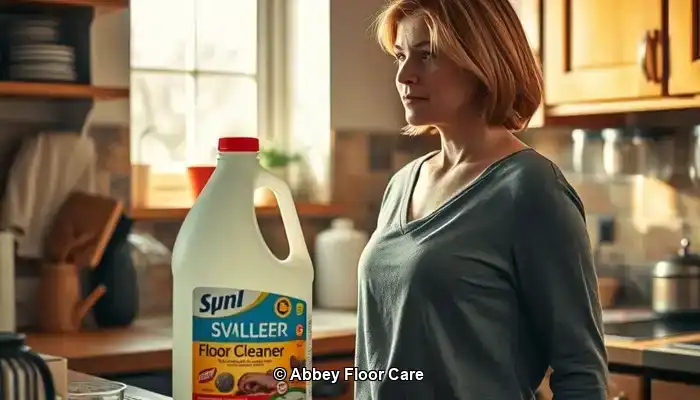
Even with adequate sealing and preventative strategies, terracotta floors require regular upkeep to maintain their natural allure. The key lies in employing the right cleaning methods and products that effectively cleanse without damaging the porous surface of the tiles.
Establishing a Daily and Weekly Maintenance Routine
In homes across Surrey, where outdoor elements frequently invade, daily sweeping or vacuuming is essential. Use a soft-bristle broom or a vacuum cleaner with a hard floor setting to eliminate dust, grit, and organic matter before it settles into the tile.
For weekly maintenance, mop the floor with warm water and a pH-neutral cleaner specifically designed for natural stone. Avoid soaking the floor; damp mopping is the best approach. Excess water can penetrate the tile, leading to stains or mould growth, particularly in older or inadequately sealed tiles.
Choosing Safe and Effective Cleaning Products
Select cleaning products that strike a balance between gentleness and effectiveness. Look for labels indicating “stone-safe,” “non-acidic,” or “pH-neutral.” In Surrey, where eco-friendliness is increasingly valued, many homeowners prefer biodegradable cleaners that are safe for both pets and children.
Avoid multi-surface cleaners that contain bleach, ammonia, or citrus extracts, as these can strip away sealants and etch the terracotta, making it more susceptible to staining.
For stubborn stains, utilise a soft cloth with a diluted solution of stone cleaner. Always refrain from scrubbing with abrasive pads or wire brushes, as these can scratch the surface and complicate future cleaning efforts.
Avoiding Ineffective Cleaning Methods: Harsh Chemicals and Steam Cleaning
While steam mops may appear convenient, they are unsuitable for terracotta. The high heat and moisture can penetrate the tile and weaken the sealant, resulting in long-term damage. Similarly, acidic cleaners, such as vinegar or lemon juice—even when diluted—can erode the tile surface and lead to discolouration.
Stick to gentle cleaning techniques and consistently test any new products on a small, inconspicuous area before applying them across your entire floor.
Comparing the Benefits of Professional Care vs. DIY Terracotta Maintenance
When managing the upkeep of terracotta floors, many homeowners in Surrey often start with DIY methods. While regular sweeping and mopping can be effective, there comes a time when professional intervention is not just beneficial but essential.
Identifying When to Consult a Tile Specialist in Surrey
If your terracotta tiles exhibit signs of deep staining, uneven colour, or surface wear, it may be time to seek professional help. Expert tile care specialists in Surrey utilise advanced equipment and stone-safe products that penetrate deeper than typical household cleaners. They can also evaluate whether your sealant has deteriorated and recommend a resealing schedule tailored to your home’s specific conditions.
Restoration services typically encompass deep cleaning, stain removal, and the reapplication of breathable sealants that safeguard the tiles while preserving their natural aesthetic. For older or heritage properties, specialists can replicate the original finish to maintain authenticity.
Assessing Costs and Long-Term Value: Is Professional Care Worth It?
While DIY cleaning may seem more economical, it often yields only temporary results. Without proper sealing and thorough cleaning, dirt continues to accumulate, necessitating more frequent maintenance and elevating the risk of permanent damage.
In contrast, professional care prolongs the lifespan of your terracotta floors. A single restoration session can rejuvenate colour, eliminate entrenched dirt, and protect the surface for months or even years. In high-traffic areas like kitchens or hallways, this investment pays off by reducing maintenance needs and enhancing visual appeal.
Homeowners in Surrey who prioritise long-term property maintenance and aesthetic value frequently discover that expert services provide peace of mind and superior outcomes. Additionally, many local providers offer eco-friendly solutions and customised maintenance plans tailored to your lifestyle.
Eco-Friendly and Safe Cleaning Solutions for Terracotta Floors
The natural beauty of terracotta deserves cleaning solutions that align with health and sustainability standards. For homeowners in Surrey looking to maintain their floors without resorting to harsh chemicals, eco-friendly cleaning options are becoming increasingly available. Fortunately, modern products and techniques enable you to protect your tiles and your home while adhering to these principles.
Choosing Non-Toxic Sealants and Cleaners
Traditional sealants often contain solvents that release volatile organic compounds (VOCs), which can linger in indoor air and adversely affect air quality. Contemporary eco-friendly alternatives employ water-based formulas that are low in VOCs and safe for use around both children and pets.
When selecting a cleaner, opt for products labelled “biodegradable,” “plant-based,” or “stone-safe.” These formulations are specifically engineered to lift dirt without compromising the porous nature of terracotta. Brands specialising in natural stone care typically offer concentrated solutions that can be diluted for everyday use, minimising waste and environmental impact.
Safe Choices for Households with Pets and Children
In vibrant Surrey households, safety is as crucial as cleanliness. Avoid using bleach, ammonia, and acidic cleaners like vinegar, as these can damage the tile and pose risks to pets and young children. Instead, select gentle formulations based on coconut oil derivatives, citrus enzymes, or mineral-based components.
For DIY enthusiasts, a simple mixture of warm water and a few drops of castile soap can be surprisingly effective for light cleaning. Always test any homemade solution on a small section first to ensure it does not affect the sealant or finish.
Implementing Sustainable Cleaning Practices
Eco-friendly cleaning encompasses not only the selection of products but also your cleaning habits. Opt for reusable microfiber cloths and mops instead of disposable pads. Frequent sweeping can reduce the necessity for regular wet cleaning. When resealing, choose products that feature recyclable packaging and minimal environmental impact.
Numerous floor care professionals in Surrey now provide green cleaning packages, utilising certified non-toxic products and sustainable methods. If you are uncertain where to start, booking a consultation with a local expert can assist you in establishing an effective and environmentally conscious routine.
Maintaining the Elegance of Your Terracotta Floors
Terracotta flooring imbues warmth, character, and timeless elegance into homes located in Surrey. However, its porous nature necessitates diligent maintenance to sustain its cleanliness and vibrancy. By grasping why terracotta becomes dirty rapidly, ensuring proper sealing, and applying effective cleaning routines, homeowners can significantly reduce grime accumulation and extend the lifespan of their tiles.
Whether managing a bustling household or restoring a heritage property, consistency is crucial. Regular sweeping, employing pH-neutral cleaners, and seasonal resealing greatly contribute to maintaining a well-kept surface. When stains or wear become apparent, do not hesitate to reach out to a local specialist for professional restoration.
Utilising eco-friendly products and safe cleaning practices guarantees that your floors remain stunning while upholding health and environmental integrity. With the right approach, terracotta can continue to be a remarkable feature in your home for many years to come.
Ready to safeguard your floors wisely? Contact us today for professional terracotta maintenance tailored to the specific conditions of Surrey. Let’s work together to keep your home looking its best—naturally.
Frequently Asked Questions About Terracotta Maintenance Addressed
Terracotta floors offer timeless beauty but come with specific care requirements. Below are answers to commonly asked questions from homeowners in Surrey who wish to keep their tiles clean, protected, and visually appealing.
How Frequently Should I Reseal My Terracotta Tiles?
In most homes across Surrey, terracotta should be resealed every 12 to 18 months. However, this interval can vary based on foot traffic, moisture exposure, and whether the tiles are situated indoors or outdoors. Areas like kitchens, hallways, and conservatories may demand more frequent resealing. If your tiles begin to absorb water or appear dull, it is time to reseal.
Can I Use Vinegar or Bleach on My Terracotta?
No—vinegar, bleach, and other harsh or acidic cleaners can damage terracotta. These substances erode sealants and etch the tile surface, leading to permanent discolouration. Always opt for pH-neutral, stone-safe cleaners specifically formulated for porous flooring.
What is the Best Mop for Cleaning Terracotta Floors?
A microfiber mop is the ideal choice for terracotta. It effectively captures dust and dirt without scratching the surface and utilises minimal water—crucial for porous materials like terracotta. Avoid sponge mops or steam mops, which can oversaturate the tiles and compromise the sealant.
Is It Safe to Use DIY Cleaning Solutions?
Yes, as long as you proceed with caution. A mild mixture of warm water and castile soap can be effective for light cleaning. Always test any homemade solution on a small, inconspicuous area first. Avoid anything acidic or abrasive, and never apply homemade cleaners to unsealed tiles.
What Should I Do If My Tiles Are Already Stained?
If stains have set in, contacting a professional restoration service is your best option. Experts in Surrey can perform deep cleaning, remove embedded grime, and reseal the surface to restore the tiles to their original colour and texture. DIY methods may worsen the damage if inappropriate products are used.
The article Tired of Dirty Terracotta? How to Keep It Clean Longer was first published on https://www.abbeyfloorcare.co.uk
The Article Keeping Dirty Terracotta Clean: Tips for Longevity appeared first on https://fabritec.org
The Article Tips for Longevity: Keeping Dirty Terracotta Clean Was Found On https://limitsofstrategy.com

